Many people ignore the importance of leveling a garage floor until they encounter an unexpected issue, such as water damage or uneven surfaces. Uneven flooring can be caused by excessive slope in your garage which needs to be resolved with proper floor leveling techniques.

Having a sloped garage floor can cause safety issues, difficulty walking and even create mold if the right level isn’t established. In this blog post, we will discuss how to level garage floor slope and provide detailed steps on improving any slopes present through the use of leveling compound or self-leveling cement applicators.
Tools and Materials You Will Need to Level Garage Floor Slope
- Self-leveling cement applicator/leveler
- Trowel
- Leveler
- Pressure washer
- Extension cord (if applicable)
- Gloves
- Safety glasses
- Dust mask
Step-by-Step Guidelines on How to Level Garage Floor Slope
Step 1: Prepare the Area
Remove any existing items, furniture, or debris from the area that needs to be leveled. This will help ensure an easier and smoother application of self-leveling cement. If needed, use a pressure washer to clear off dirt and grease buildup on your garage floor. Preparing the area correctly will help ensure a successful leveling job.
Step 2: Apply Leveler
Once your garage floor is cleaned and prepped, you can begin the leveling process. Mix up the self-leveling cement according to the manufacturer’s instructions and apply it evenly over the entire surface with a trowel. Make sure to spread the cement in a thin but even layer. Applying too much cement can create an uneven surface, so be sure to follow the manufacturer’s guidelines.
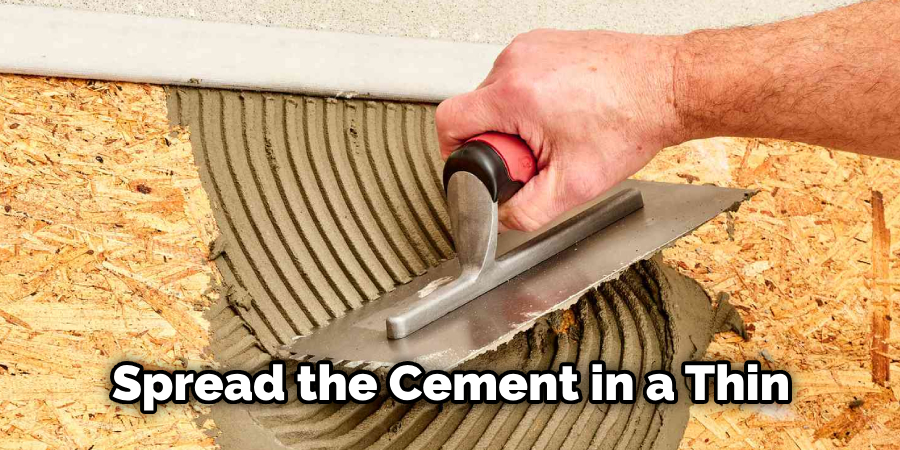
Step 3: Level Out the Compound
Use a leveler to make sure that your self-leveling cement is completely even and flat across the entire surface. If you need to, use more of the compound to further level any spots that may have gotten missed when initially applying it. This will help ensure an even and smooth foundation for your garage floor.
Step 4: Let the Compound Dry
Once you have leveled out your self-leveling cement, let it dry according to the manufacturer’s instructions. This may take anywhere from one day to several days depending on the product used and environmental conditions. Make sure to check your manufacturer’s instructions for dry time and guidelines.
Step 5: Inspect for Levelness
When the compound has completely dried, inspect the area for any uneven spots or to make sure that your level is complete. If needed, you can use a pressure washer to remove any excess compound that may have been left behind. This is the final step in leveling your garage floor and it should be done with extreme care.
Following these steps should help ensure a successful job in leveling out your garage floor slope. It is important to note that this job requires patience and attention to detail in order for it to be done correctly.
If you are unsure of how to proceed, it is recommended that you contact a professional who can help ensure that the job is completed safely and effectively.
Additional Tips and Tricks to Level Garage Floor Slope
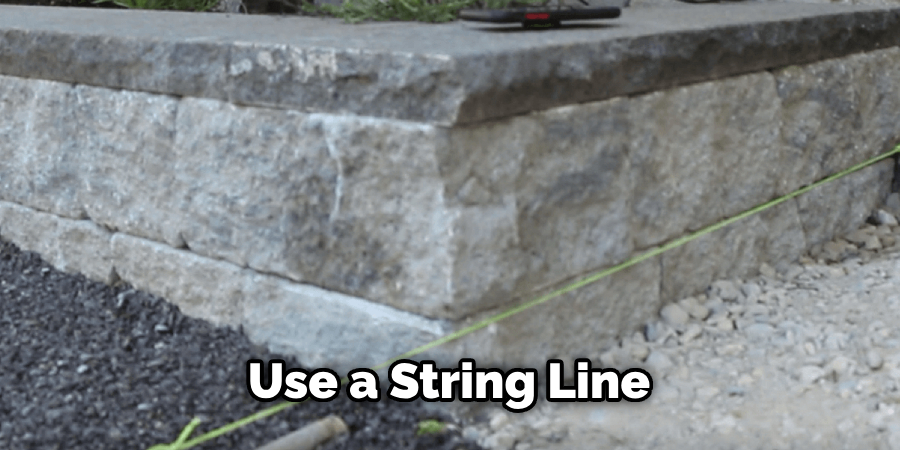
- Use a string line to make sure your lines are straight. Measure the distance between the lowest and highest points on the floor, then use a string line to see if it is sloping in any direction or if it needs adjustment.
- Rent or purchase a compactor to level out any excess gravel that was added during the leveling. A compactor will help compress and level out any loose gravel, giving you a smooth surface.
- To create a slope in your garage floor, use a broom handle or two-by-four to measure the depth of the slope you want, and then shovel gravel into that area until it is sloping at the desired angle.
- If you need to fill in cracks or holes, make sure the repair material is compatible with the surface and environment of your garage floor before you apply it.
- Sealant should be applied after any repairs have been completed and the area has been thoroughly cleaned to protect your floor from moisture damage.
- If you are adding a drain to your garage floor, make sure it is sloped properly so that water can drain away from the area.
- Lastly, check your floor regularly for any signs of settling or sinking – if you notice anything strange, it is best to get help right away to prevent further damage and costly repairs later on.
Following these tips and tricks will help ensure that your garage floor is leveled properly and provide you with a safe, practical floor space. Keep in mind that it may take some time to achieve the desired level of slope on your garage floor, so be patient and work slowly for the best results. The end result will be worth it!
Precautions Need to Follow for Level Garage Floor Slope
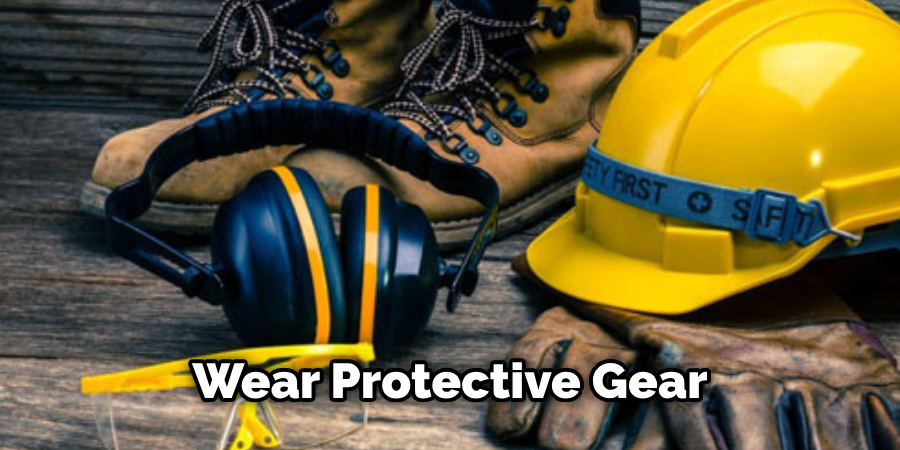
- Always wear protective gear such as gloves, goggles, and a dust mask when working on concrete flooring. This is especially important if you’re dealing with an older garage with potentially hazardous materials.
- Be sure to check the slope of your current garage floor before taking any action. It’s generally best to leave an existing slope alone unless it is drastically uneven.
- If you plan to level the floor yourself, there are several different techniques you can use. Depending on your skill level, you may opt for a simple concrete patch or an epoxy-leveling compound. In either case, be sure to follow the manufacturer’s instructions and take necessary safety precautions.
- If you’re using a concrete patch, make sure to remove any debris or contaminants from the area before beginning work. When applying patches, be sure to let them dry completely before continuing with your project.
- If you’re using an epoxy-leveling compound, take extra care when mixing and applying it. The compound is designed to be extremely durable, but also very sticky. Be sure to keep the area clean and use a safety mask when working with it.
- Once your garage floor is level, you’ll want to seal it properly. This will help protect it from stains and water damage and make cleaning easier. Apply a sealant specifically designed for concrete flooring and take extra care to cover any cracks or crevices.
Following these precautions can help ensure that your garage floor is leveled properly and safely. With the right materials and a bit of patience, you’ll have a beautiful, level surface to enjoy. Have fun!
Frequently Asked Questions
What Types of Slopes Are Necessary to Level a Garage Floor?
Typically, a garage floor should have a gradual slope away from the house, and no more than 2% or ¼ inch for every foot of distance. This ensures that water will be drained away from your home’s foundation.
How Do I Create the Slope?
You can use a long level and a measuring tape to identify any irregularities in your garage floor’s slope. If the floor is too flat, you may need to add some gravel or sand under a new concrete slab to ensure that it has an appropriate slope.
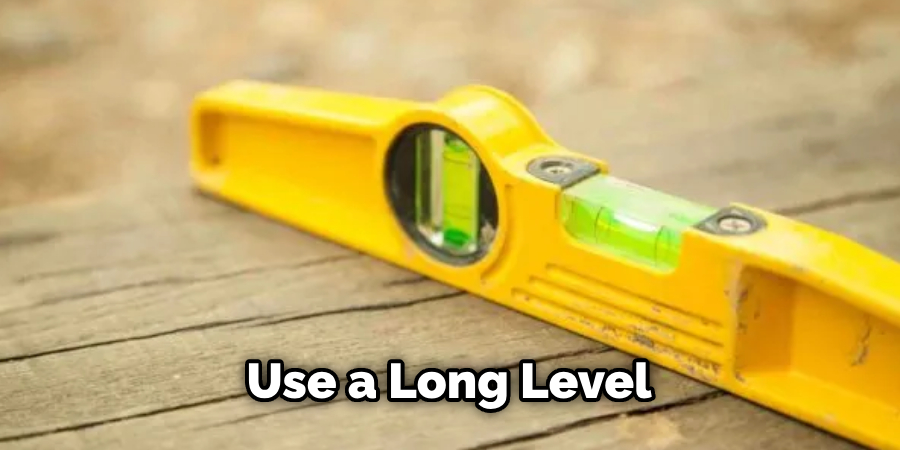
What Can I Use to Level the Floor?
A concrete self-leveling compound can be used to fill in any low spots on your garage floor. This is a special product that is designed for leveling and pouring applications. Additionally, you may need to use shims or adjust the legs of your garage cabinets and shelving units if they are uneven.
Do I Need to Prepare the Floor Before Leveling?
Yes. Before you start leveling your garage floor, it’s important to take some time to clean and prepare the surface. Sweep away any dirt or debris, and use a concrete sealer or primer if necessary. This will help ensure that your self-leveling compound adheres properly.
What Are Some Tips for Leveling a Garage Floor?
It’s important to take your time when leveling your garage floor. Make sure that you use appropriate safety gear, and don’t forget to follow the manufacturer’s instructions carefully. Additionally, it may be helpful to enlist the help of a friend or family member so that you can ensure an even and accurate application.
Can I Use Self-Leveling Compound on a Sloped Garage Floor?
Yes, self-leveling compounds can be used on sloped floors as well. You may need to fill in any low spots or adjust the slope as necessary. However, keep in mind that the product will not be able to make a sloped floor perfectly level.
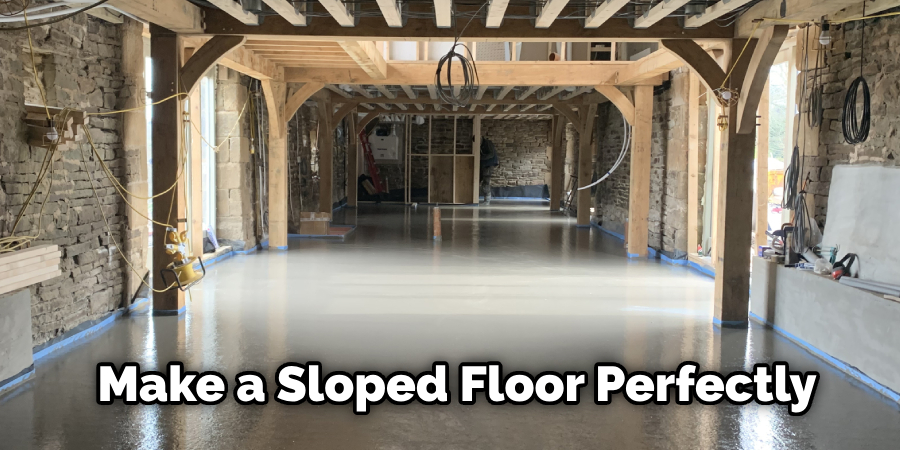
Conclusion
With the above outlined you can easily understand how to level garage floor slope. It is important to take your time and follow the manufacturer’s instructions carefully, enlist a friend or family member to help ensure an even application and always wear appropriate safety gear.
Self-leveling compounds can be used on sloped floors as well, but keep in mind that this product cannot make a sloped floor perfectly level.
